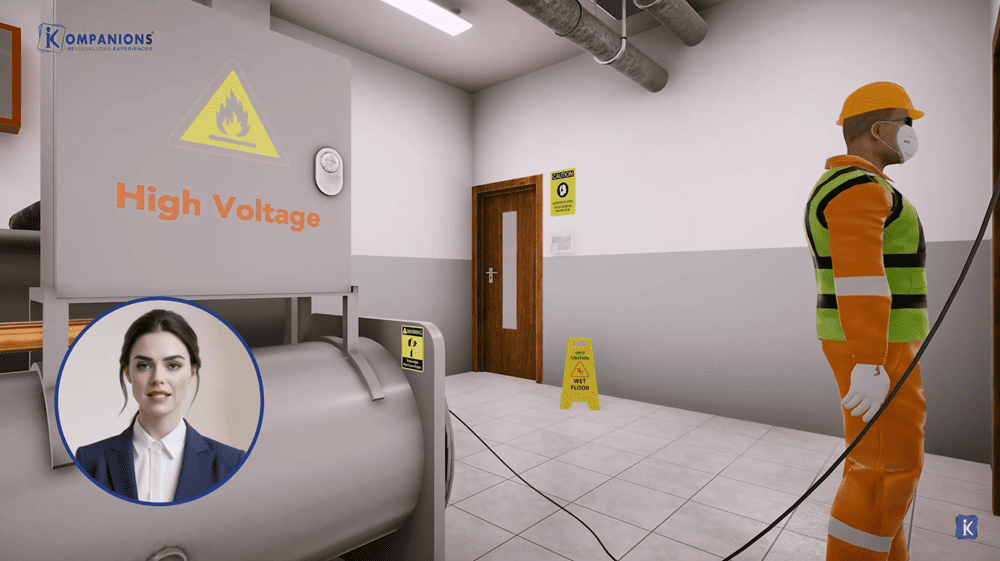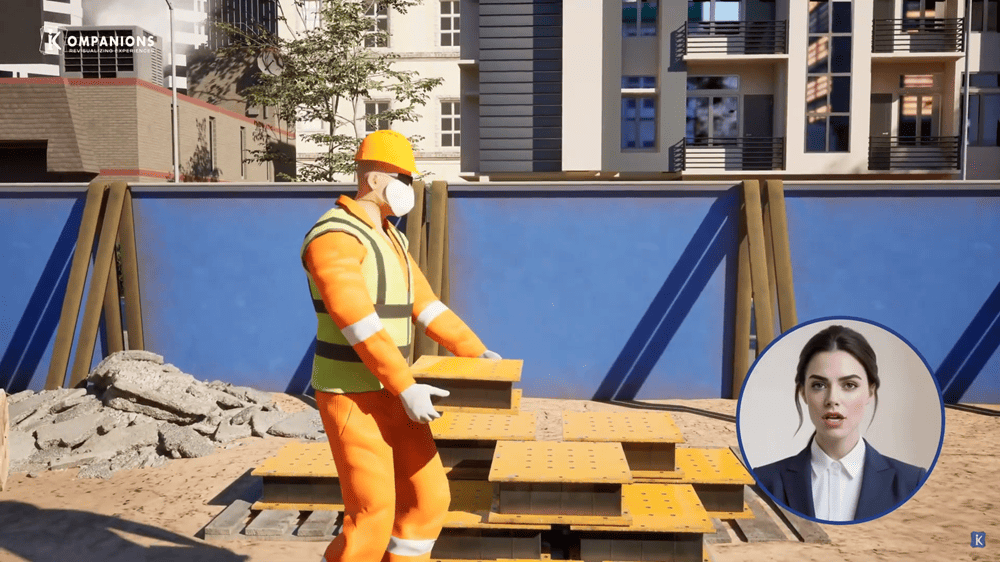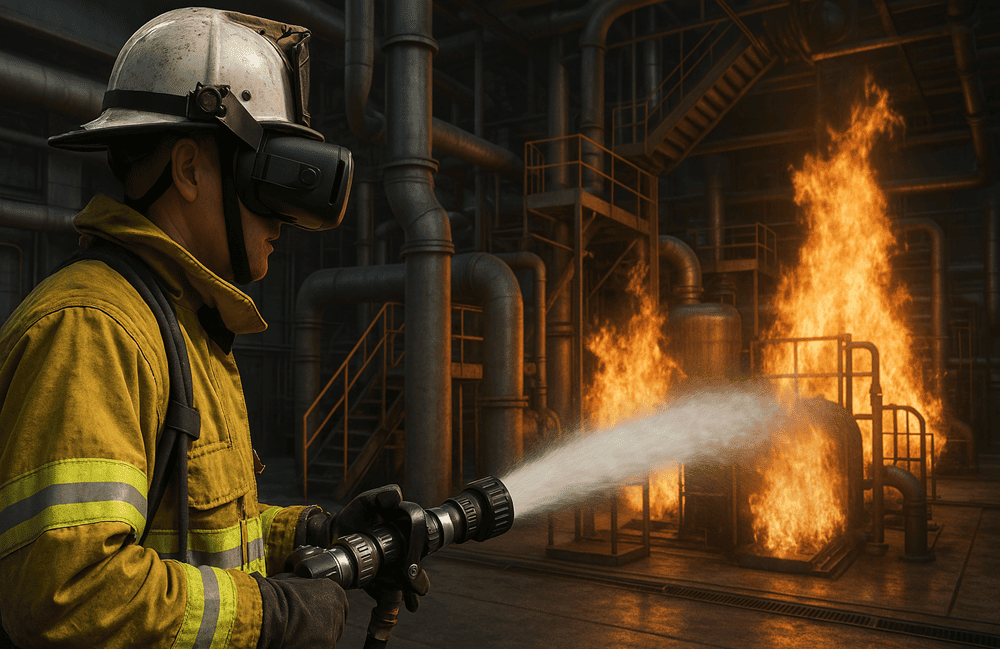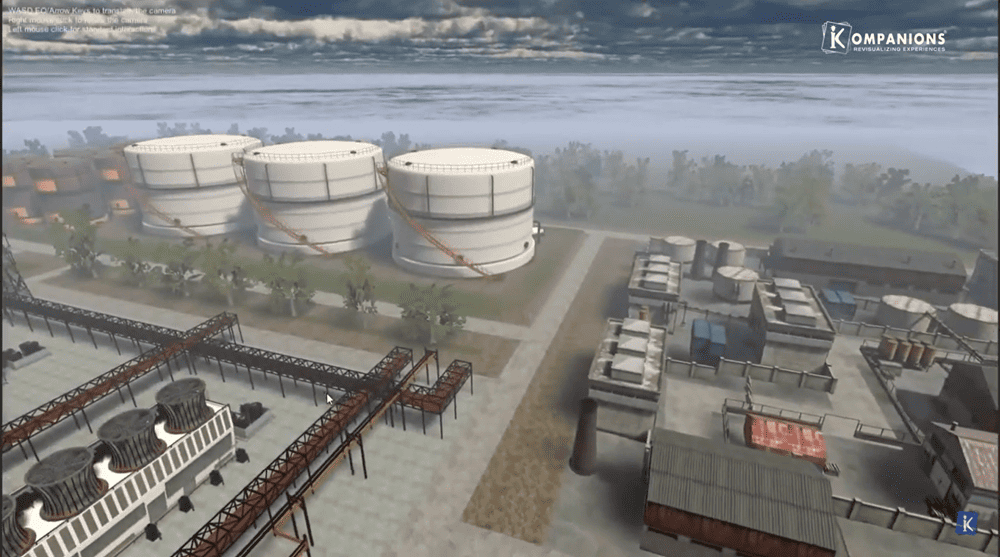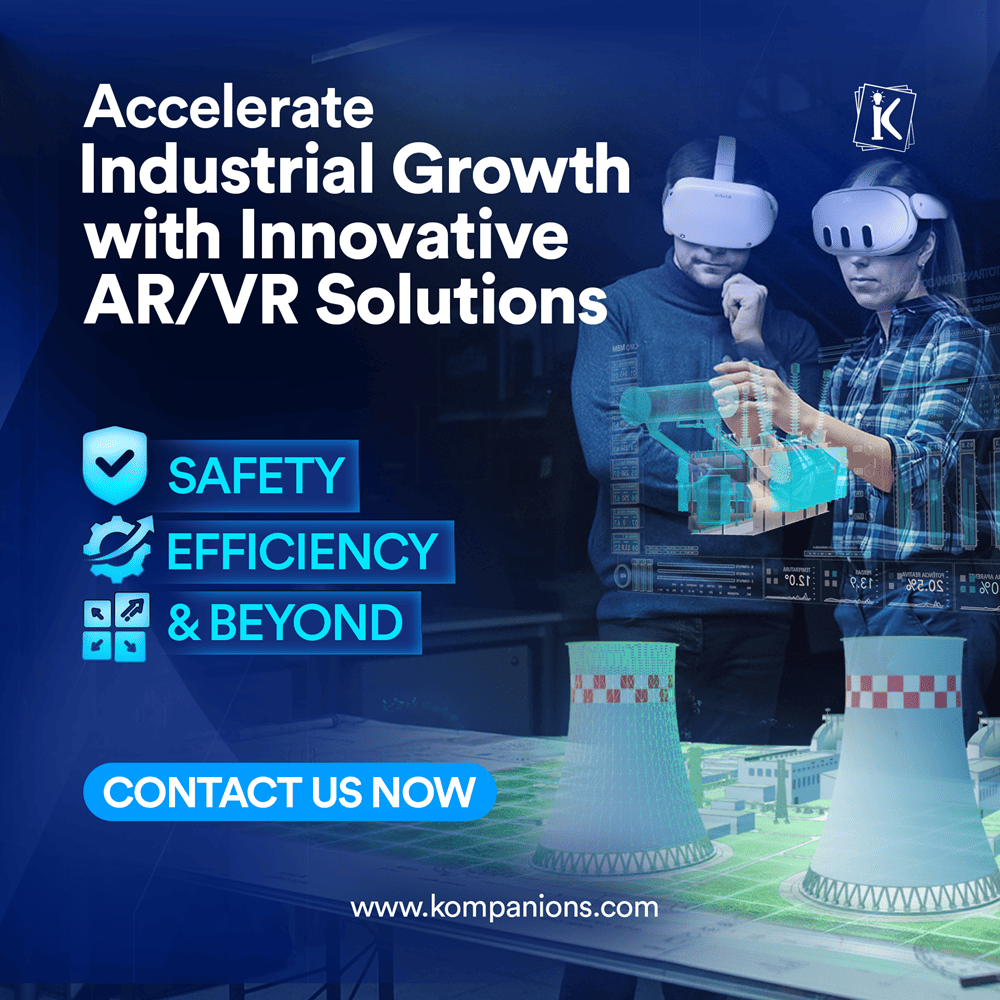What is Safety Animation: Key Benefits and Use Cases
Safety training is the backbone of any high-risk industry, whether it's oil & gas, manufacturing, construction, or logistics. Yet, traditional training methods often fall short when it comes to engagement, retention, and impact. That’s where safety animation steps in.
In today’s fast-paced industrial environments, where attention spans are shrinking and compliance requirements are rising, safety animation offers a modern, effective way to deliver complex information in a clear, visual format.
Combined with VR safety solutions, safety animation has become a powerful tool in creating immersive learning experiences that drive real behavioral change, and that’s exactly what industries need to avoid downtime, injuries, and legal setbacks.
What Is Safety Animation?
Safety animation refers to the use of animated visuals to communicate workplace safety guidelines, procedures, hazard identification, emergency protocols, and equipment handling techniques. These can range from 2D explainer videos to fully immersive 3D animations integrated into VR or AR platforms.
Instead of long lectures or slide decks, safety animation condenses critical information into bite-sized visual stories that stick, making it easier for workers to recall what matters when it matters most.
Why Are Companies Investing in Safety Animation?
Before we explore the benefits of safety animation, let’s look at why it's gaining traction across various industries:
- Increased incidents caused by human error
- Language barriers among multicultural teams
- Growing demand for digital-first onboarding
- Shortage of skilled workers requiring faster upskilling
- Safety animation solves all of the above with clarity and consistency.
Key Benefits of Safety Animation
Here’s a breakdown of how animated safety content is changing the landscape of industrial safety training:
1. Improved Knowledge Retention
People remember 90% of what they see and do, compared to just 10% of what they hear. Animation taps into this visual advantage.
✅ Real-life example: Animated simulations of fire evacuation procedures help workers remember the right sequence of actions under pressure.
2. Higher Engagement Rates
Dry safety manuals and generic PowerPoints often lead to disengagement. Animated videos, especially those with storytelling, hold attention longer, improving comprehension.
“Employees are 75% more likely to complete safety modules if the content is visually engaging.” (Source: Safety + Health Magazine)
3. Consistency in Training
With safety animation, everyone receives the same message every time. This removes variability that might occur in instructor-led sessions.
- No miscommunication
- Standardized delivery across locations
- Easy updates to content as policies evolve
4. Overcomes Language Barriers
Visual learning doesn’t rely heavily on language. Animated scenarios speak through action, not words — making training accessible to non-native English speakers or low-literacy workers.
5. Safer Demonstrations
Some situations are too dangerous to replicate live — think chemical leaks, gas explosions, or equipment malfunctions. Safety animations allow teams to experience high-risk scenarios without any real-world exposure.
| Scenario | Animated Simulation? | Real-Life Demo? |
|---|---|---|
| Confined space entry | ✅ Yes | ❌ Risky |
| Lockout/Tagout failures | ✅ Yes | ❌ Impractical |
| Working at height mishaps | ✅ Yes | ❌ Not safe |
VR Integration: Bringing Animation to Life
When paired with VR safety solutions, safety animation becomes fully immersive. Workers can interact with machinery, identify hazards in real-time, and practice safety drills in a virtual environment.
This isn't just about fancy tech. It’s about giving workers a muscle memory for safety — a critical need in high-risk industries where decisions need to be instinctive.
- Benefits of Using Safety Animation in VR:
- Interactive learning increases focus
- Real-time feedback on performance
- Gamified elements that make learning enjoyable
Reduce on-site incidents with engaging visuals. Animated training makes complex scenarios simple & memorable.
Get a Free DemoCustom VR Development + Safety Animation = Scalable Impact
Once companies experience the value of visual training, many move toward custom VR development. This allows them to tailor safety scenarios based on specific equipment, floor layouts, SOPs, and risk areas.
- Here’s what that typically includes:
- 3D modeling of the actual workspace
- Animation of company-specific hazards
- Integration with LMS or compliance tools
- Multilingual voiceovers or captions
It’s not just a one-size-fits-all solution — it’s your real-world environment recreated digitally for safe, repeatable learning.
Use Cases Across Industries
- Oil & Gas: Simulating emergency shut-downs and hazardous gas leaks
- Construction: Animations showing proper scaffolding techniques and fall protection
- Manufacturing: Safe handling of moving parts, robotics, and forklifts
- Utilities: Visual walkthroughs of electrical safety protocols
- Mining: Training for underground navigation and evacuation
Each sector has unique challenges. Safety animation addresses these through customized visual modules that resonate with the on-ground teams.
When Should You Use Safety Animation?
Safety animation isn't just for onboarding. It can be applied across the employee lifecycle:
- New hire orientation
- Annual safety refreshers
- Pre-job briefings
- Incident recreations
- Toolbox talks
- Process change communications
Are Traditional safety drills falling short? Switch to animated simulations that stick — and save lives.
Get a Free DemoCost vs. Impact: Is It Worth It
While initial investment in animation might seem high compared to static materials, the long-term ROI is significant:
| Metric | Traditional Training | Animated Safety Training |
|---|---|---|
| Engagement rate | 45–55% | 85–90% |
| Retention after 7 days | 20–30% | 60–70% |
| Time to complete training | Longer | Shorter |
| Update flexibility | Low | High |
You save time, reduce accidents, and improve audit outcomes — all of which impact the bottom line.
Final Thoughts
The benefits of safety animation aren’t limited to making training “look good.” It’s about creating a safer, smarter, and more responsive workforce. From visual storytelling to hands-on VR training, animation is reshaping how industries prepare their teams for real-world risks.
As technology evolves, forward-thinking safety managers and training heads are integrating animated modules into their core safety strategies, and the results are clear: fewer incidents, better preparedness, and a stronger safety culture.
“Safety is not an add-on. It’s embedded in every action, and the right animation makes that stick.”

